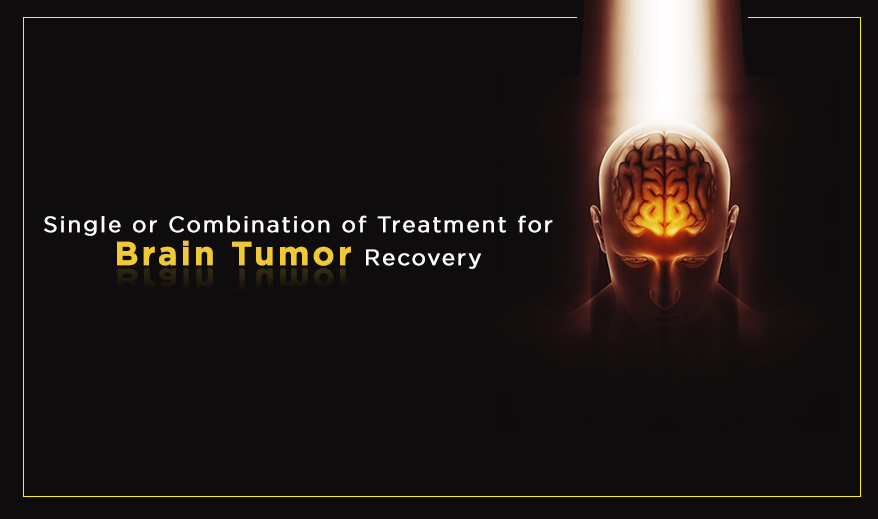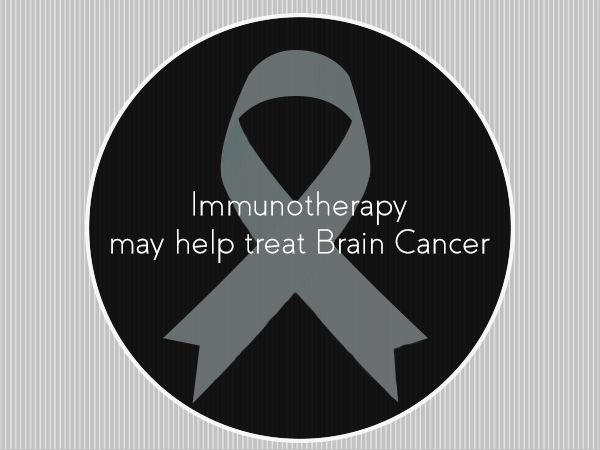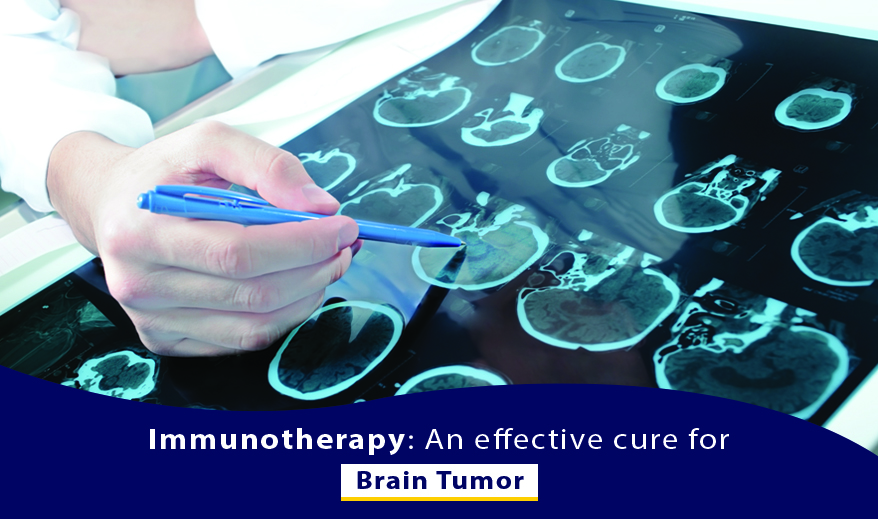
Posted in: Brain Tumor Treatment by Dr. Tarang Krishna Posted Date: 28 Oct, 2020
The brain is what controls your bodily movements and day-to-day functions. It is that box that sends signals to the rest of your body, guiding them to do their job. It receives the message through your sensory organs and decodes it, often performing multiple functions at a time. It not only takes care of your essential tasks of movement but also forms your response to daily situations. For example, it regulates the beating of your heart and controls your breathing when you are in a stressful situation.
A brain tumor diagnosis can indeed be life-changing for you as well as your family. But time is of utmost importance in such a situation. Seeking a doctor and getting the right help can save your body from more harm. Your doctor is the best person to offer you advice on how to proceed with your treatment. Explore more through this blog and prepare yourself by understanding brain tumors and their treatment procedures.
About Anatomy of the Brain
There are three parts to the brain:
- The Cerebrum
- The Cerebellum
- The Brain Stem
The Cerebrum
The Cerebrum is divided into two equal parts: the left hemisphere and the right hemisphere. The bridge between the two parts known as Corpus Callosum is responsible for transmitting messages from one hemisphere to the other. Each side of the brain controls movements of the opposite side of the body. For example, if a stroke happens in the left hemisphere, your right side of the body might become weak or paralyzed.
However, all the functions of the two halves are not the same. The left hemisphere controls arithmetic, writing, speech, etc. The right controls spatial ability, artistic and music skills, and bursts of creativity. The left hemisphere is often the dominant of the two.
There are particular fissures in the cerebral hemisphere that divide it into lobes. There are four lobes in each hemisphere:
- Frontal: this controls the personality, speech, emotions, intelligence, and the motor functions of the body.
- Temporal: It controls hearing, understanding language, and the parts of memory.
- Parietal: Interprets language, and contains the sensory strip. It also decodes visual, hearing, and motor signals
- Occipital: It is primarily responsible for interpreting vision such as light, color, or movements.
Each lobe is further divided into areas designated for specific functions. The entire network between the lobes and the hemispheres come together in a complicated relationship.
The Cerebellum
The cerebellum is found below the Cerebrum, at the back of the brain. It controls functions of the same side of the body and is responsible for coordination and balance.
The Brain Stem
The brain stem forms the connection between the cerebellum and the spinal cord. The brain stem regulates the involuntary functions of the body, such as temperature regulation, and heartbeat. The Cerebrum and Cerebellum send their messages to the body through the brain stem.
The Meninges
Meninges is the membrane that fills the gaps between the above three parts and protects them. There are three meningeal layers:
- The dura mater
- Arachnoid
- Pia mater
The CSF or cerebrospinal fluid can be found almost at the center of the brain, in the lateral ventricles. CSF circulates in the brain and spinal cord, between the arachnoid and the pia layers of the meninges.
Now that we know the basics of brain anatomy let's look at the types of brain tumors.
About Primary Brain Tumors
Primary brain tumors or intracranial tumors are a mass of tissue that multiply uncontrollably in the brain. It is an abnormal occurrence, and the body is unable to check the mechanism which controls the normal cells. Primary brain tumors originate in the brain or the brain's immediate area. They are categorised at glial, made of glial cells, or non-glial. Non-glial tumors that develop in the structures of the brain, which include blood vessels, glands, and nerves can be benign or malignant. Tumors can cause harm to the brain cells directly. They damage brain cells by producing inflammation, putting pressure on certain parts of the brain, or applying pressure within the skull.
There is no particular cause of the occurrence of primary brain tumors. However, research has listed certain risk factors that contribute to the formation of brain tumors.
About Secondary Brain Tumors
Secondary brain tumors are tumors that originate in a different place of the body, such as the lungs or breasts, but travel to the brain. They are known as Metastatic brain tumors and the process of their migration to the brain through the bloodstream is known as Metastasis. Such tumors are cancerous and malignant.
Metastasis occurs in almost one of four cancer patients. Such tumors have low survival rates, usually of only a few weeks. However, development and research in diagnosis and treatments have improved the survival rates and expanded it from a few weeks to a few years. It has also led to an improvement in the quality of life of the patient.
Types of Brain Tumors
There are two types of brain tumors – Malignant and Benign
Malignant Brain tumors account for nearly 78% of brain tumors. They are often categorised in the Glial or Gliomas type of tumors because they arise from the supporting cells of the brain – the Glia. Here are the kinds of Gliomas brain tumors
- Astrocytomas: Such a tumor is usually formed in the Cerebrum, which is the most extensive section of the brain. Astrocytomas originate in the astrocyte, a common type of a star-shaped cell. Astrocytomas spread and blend with other tissues of the brain. While this spread may be quicker in some cases, in others, it may be slow. It does not necessarily grow into any other tissue of the brain.
- Meningiomas: Meningiomas are the most common type of primary brain tumor in adults. They usually occurs late in life, between 70 – 80 years of age. They begin in the meninges, the membrane that lines the other parts of the brain. Meningiomas can be a Grade 1, 2, or 3 tumor, which starts as benign and are slow in growth.
- Oligodendrogliomas: The tissue covering that protects the nerves of the brain come together or multiply uncontrollably to form Oligodendrogliomas. They can be a Grade 1, 2, or 3 tumor which grows slowly and don't spread.
- Ependymomas: This tumor is found in the brain or spinal cord of your body. It starts in cells that line the ventricles (fluid-filled spaces in the brain) as well as in the canal that holds the spinal cord and cerebrospinal fluid (CSF) are derived from a neoplastic transformation of the ependymal cells lining the ventricular system and account for two to three percent of all brain tumors. Nearly half of Ependymomas are diagnosed in kids below the age of 3.
- Glioblastoma multiforme (GBM): It is the most invasive and life-threatening type of brain tumor. It is known to increase and spread to other tissues resulting in a poor prognosis. They can be made up of different kinds of cells such as astrocytes and oligodendrocytes. It has a pattern of affecting more men than women of ages 50 to 70.
- Mixed gliomas: Such tumors are made up of more than one type of cell. The cells can include astrocytes, oligodendrocytes, and ependymal cells.
- Mixed glial and neuronal tumors: Such tumors are made of glial cells and neuron cells. They are mostly found in children and young adults. These tumors include pleomorphic xanthoastrocytoma (PXA), ganglioglioma, and a dysembryoplastic neuroepithelial tumor (DNET).
- Primitive neuroectodermal tumors (PNETs): These tumors are most common in children but can affect adults as well. They are known to multiply in younger children than older ones. They begin in neuroectodermal cells, which are immature central nervous cells. The most common type of PNETs is medulloblastoma which starts in the cerebellum. The other is the Pineoblastoma which starts in the pineal gland. There is the Neuroblastoma as well, which begins in the brain or the spinal cord.
Treating Brain Tumors with Immunotherapy
Your immune system is the first line of defense that protects your body from any harm. When you have cancer, your immune system (white blood cells/plasma) gets compromised and is not able to perform its functions. Immunotherapy is a treatment that supports or equips your compromised immunity to fight cancer, infection, or other diseases. This treatment prepares the body to fight cancer on its own rather than through chemotherapy or radiation which kills cancer cells.
Brain tumor immunotherapy treatmen is similar. It is a non-invasive technique that stops any further growth of the tumor that may turn into cancer. It also helps in the prevention of remission.
However, each brain tumor differs from the other. Hence, the treatment for it depends on its size, placement, and grade. Your doctor will check the status of your tumor and offer you the best course of action to limit the growth of the tumor in its initial stages.







My daughter 16 years has gbm grade 4 brain tumor which was diagnosed on juky15,2015.she's has 2 surgeries,tmz,radiation,4 avastin,2 combination therapy(avastin+nivolumab)..and now doctors say her brain is dead..she's on ventilator since 15 days..heart doing good.pls tell me if something can be done.thanks.
Please share your contact details with us. Our team will contact you soon.
Am from Kerala. My friend is suffering from glioblastoma stage 4 spread across the brain stem affecting 7th and 8th cranial nerve. He is 33 years old and have done a surgery once and radiation twice and have taken Chemotherapy for 3 years. Is there any possibility of recovery treatment. My contact number is 9496237746
M/s Ramya, Cases of GBM (Post Operated/CT/RT) are treated by us. Even at Stage 4, Immunotherapy treatment has helped patients to recover with better quality of life. However, to guide effectively, please share your friend's reports through mail at info@cancerhealer.in or else someone can visit personally at our nearest center with a prior appointment.
To speak to us please call on : 011-42919191